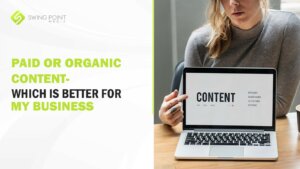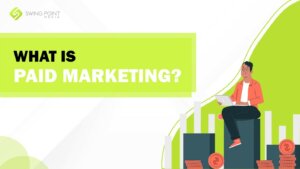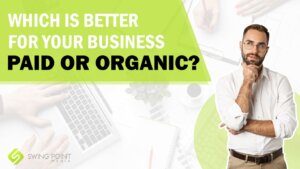
As a small business owner, you likely face the decision of whether to invest in paid or organic content. Both have their pros and cons, but which one is better for your business? Let’s take a look at the differences between paid and organic content, and help you decide which is the best option for you.
What Is Organic Marketing?
Organic marketing is the process of creating and promoting content that is natural and organic in nature. This means that the content is not promotional or advertorial in nature but rather informative and helpful. Organic marketing takes many forms, such as blog posts, infographics, videos, and more. The main goal of organic marketing is building trust.
There are several reasons why organic marketing is beneficial for your business.
Organic marketing is more authentic. When you create organic content, you are not trying to sell anything. You’re simply providing valuable information that helps your readers. This makes your content more credible.

What Is Paid Marketing?
Paid marketing is any form of advertising that you pay for. This includes paid search ads, display ads, social media ads, and more. Paid marketing is a great way to get your content in front of a larger audience.
There are several advantages to paid marketing. For one thing, it is more effective. When you pay for ads, you are guaranteed that your content will be seen by a larger number of people. Plus, paid marketing is more targeted. You can target your paid ads to specific demographics, interests, and even locations. This ensures that your content is seen by the people most likely to be interested in it.
What Are the Benefits of Paid and Organic Content?
Now that we’ve looked at the differences between paid and organic content, let’s take a look at the benefits of each.
Benefits of Paid Content
The main benefit of paid content is that it is more effective. Paid ads are more likely to be seen by a larger number of people, and they are also more targeted.
Another benefit of paid content is that it can be a great way to boost your organic reach. When you pay for ads, you are also increasing the chances that your organic content will be seen. This is because paid ads often include links.
Benefits of Organic Content
The main benefit of organic content is that it is more authentic. This makes your content more credible. Organic content is also more likely to be shared. People are more likely to share helpful, informative content that they trust. This means that your organic content has the potential to reach a large audience.
Finally, organic content is more sustainable. Paid ads eventually stop working, but organic content continues to be shared and trusted long after it is published.
Is Social Media Organic?
Social media platforms, such as Facebook and Twitter, offer both paid and organic ways to promote your content.
Organic social media is any content that you post on your social media platform without paying for it. This includes status updates, photos, videos, and more. The main advantage of organic social media is that it is affordable.
Creating a Social Media Marketing Plan
The first step is identifying your goals. What do you want to achieve with your social media marketing? Do you want to increase brand awareness, drive traffic to your website, or generate leads? Once you know what you want to achieve, you can create content that is designed to help you reach those goals.
Next, you need to create a content calendar. This helps you keep track of what you need to post when you need to post it, and where you need to post it. A content calendar also helps ensure that your content is consistent and on-brand. Finally, you need to set up a system for measuring your results.
Tips for Creating Successful Paid or Organic Advertising Campaigns
Every business is different, and what works for one business might not work for another. However, some general tips can help you create a successful advertising campaign, whether you choose to go the paid or organic route.
Here are a few tips to get you started:
- Know your audience. The first step to creating a successful advertising campaign is understanding who your target audience is. What are their demographics? What interests do they have? What needs do they have that your product or service can help with? Once you understand your audience, you can create content that appeals to them.
- Set a budget. Advertising campaigns can be expensive, so it’s important to set a budget and stick to it. Determine how much you’re willing to spend on advertising per month or per week, and then stick to that number.
- Create compelling content. Whether you’re creating a paid ad or an organic post, your content needs to be compelling. It should be well-written, informative, and relevant to your audience.
- Test and measure. Once you’ve created your advertising campaign, testing it and measuring the results is important. Try different tactics and see what works best for your business. Then, adjust your campaign accordingly.

Which Is Better for Your Business – Paid or Organic?
Paid and organic content both have pros and cons, so it’s important to decide which is better for your business. Paid content is more effective because it reaches a wider audience, but it also is more expensive.
Organic content is less expensive, but it takes longer to reach potential customers. Ultimately, whether to use paid or organic advertising depends on your budget and goals.
Paid and organic advertising both have their pros and cons, so it’s important to consider what will work best for your business. If you need help making a decision, our team of experts can walk you through the options and help you create a plan that will maximize your ROI. Contact us today to get started!
SwingPointMedia
SwingPointMedia is a marketing company focused on using content marketing, such as written articles, videos, and podcasts, to attract their customers’ ideal audiences. This approach has proven to attract higher-quality customers while simultaneously reducing the sales cycle by as much as 70%.
SwingPointMedia serves local businesses in Southern California and can be reached by calling 760-422-5176.

